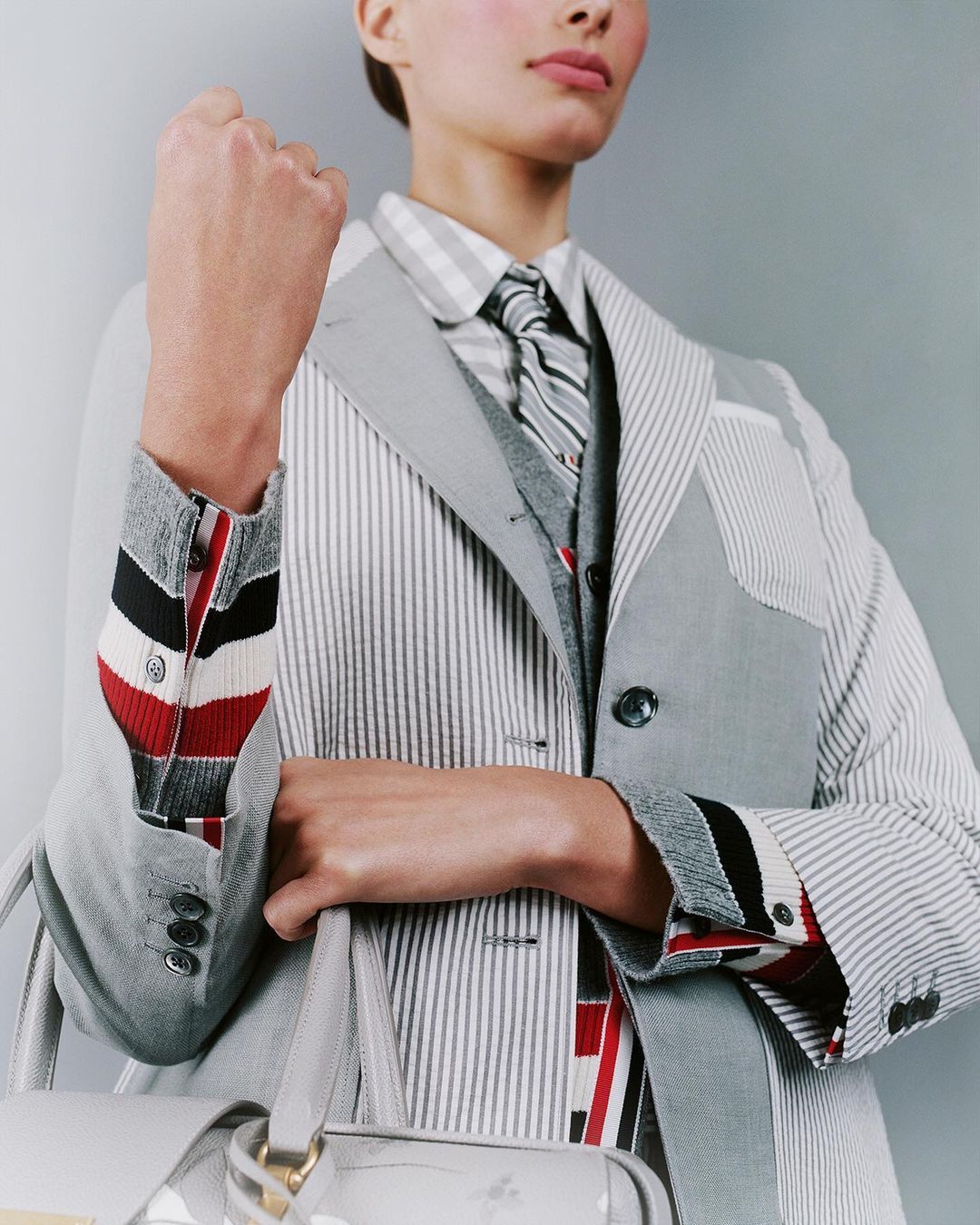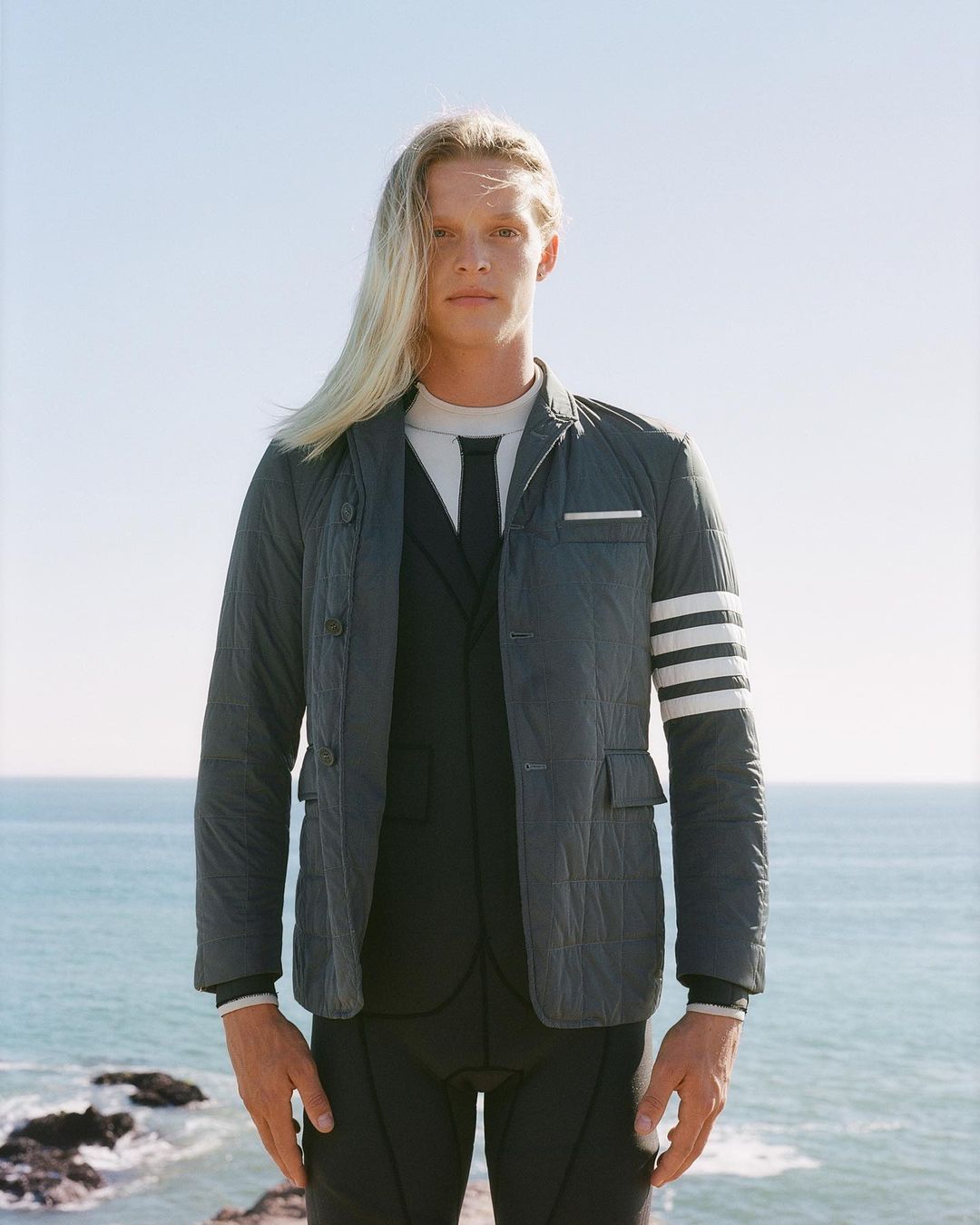The stripes trademark case comes to end as the jury ruled in favor of Thom Browne
In the fashion industry, there’s a gray area on the topic of originality. With the vast sources of inspirations, countless concepts that tend to overlap with one another, and style elements that are seemingly similar to another—it’s definitely getting harder to declare the legitimacy of a design nowadays. It also brings us to the question of what makes design truly original? Majority of the trends we see are a culmination of many sources, each element carefully chosen and merged to create a fresh collection.
RELATED: The Power of Two: 2022’s Standout Fashion Collaborations
Though many perceive it as a regular occurrence and a normal flow in the fashion industry, there are instances where designs create friction between two brands. This time around, we get to witness the finality of the long debacle between two fashion brands and their fight towards a particular design.
The recap


The altercation between Adidas and Thom Browne traces back to 2005 when the New York luxury fashion brand released their motif, the Three-Bar Signature. Two years after the debut of the motif, Thom Browne agreed to stop producing it after Adidas’ CEO reached out to the brand. Adidas’ concern towards the motif was to safeguard their trademark, their signature three-stripe logo, and it’s worthy to take note of their constant pursuit of keeping the design close to them as they sued other fashion brands such as Polo Ralph Lauren and Marc Jacobs.
Fast forward to the following year, Thom Browne launched the Four-Bar Signature motif that featured four stripes placed on jackets, neckties, as well as their activewear—this is where it started to overlap.
The debut of the Four-Bar Signature was to avoid legal dispute with the sportswear giant, and it remained quiet for the next 10 years—that was until Thom Browne filed to trademark their Grosgrain Signature. According to the brand, this motif contains more stripes colored in white, red, and blue, while Adidas claimed that it has three stripes in the same set of colors. This matter wasn’t made public until 2018 when Adidas proposed a settlement with Thom Browne as they claimed that they weren’t aware of the infringement. And in 2019, Adidas lost their bid to extend their three-stripe motif in the European Union when the court stated it lacked distinctive character.

The settlement discussion between Adidas and Thom Browne went on from 2018 to 2021, with the initial complaint filed in 2021. The most recent update was when Adidas and Thom Browne went to court on January 3.
The concerns
One thing to take into consideration is that Adidas and Thom Browne are not direct competitors. The German sportswear company produces affordable sportswear pieces such as shoes, sweatshirts, and bags. While the New York-based fashion brand specializes in luxury clothing such as their suits.
Because of the stripes motif, the concern on Adidas’ end was when Thom Browne produced their own activewear items and was actively participating in sports-related deals such as the European football club, FC Barcelona. Another specific collection we can reference is their SS10 collection that featured the four-bar motif on their sweatpants. The counsel of Adidas stated that the issue was consumers will confuse the two brands because of said motif and its possible trademark infringement.


On the other hand, Thom Browne’s issue was the decade-long wait of Adidas’ complaint towards the motif and their position in the market. While the change of motif happened in 2007, there was no issue towards the rebranding until Adidas made it public in 2018 again, claiming that they were not aware of the infringement. The counter made by the counsel of Thom Browne was that they don’t agree with the unreasonable decade-long delay and that Adidas “doesn’t own stripes”—an argument that Robert Maldonado, a lawyer for Thom Browne, stated on Thursday, reported by Bloomberg Law.
The demand
In court, Adidas dropped the ball as they stated they are seeking $7.8 million in damages and profits from Thom Browne. Another request from the sportswear company is a court order form to stop Thom Browne from producing the design due to customer confusion.
The final say
Just today, it was announced that the jury ruled in favor of Thom Browne. The reasoning behind this was that the eight-person jury was not convinced with Adidas’ claim of Thom Browne using their three-stripe logo without authorization, that there was no trademark infringement.


The takeaway
For those who are planning to have their career in the fashion industry, the debacle between Adidas and Thom Browne might just be the perfect case study regarding the understanding of originality. In the end, it boils down to one’s subjectivity as one brand produced the motif for more than 70 years, while the other introduced another version of the simplistic and rather common design.
As previously mentioned, the talk of originality is still in the gray area as designers continue to create their pieces drawn from various sources. So, is originality based on time or variety? We’ll leave that to your judgment.
Photos from ADIDAS ORIGINALS and THOM BROWNE (via Instagram)







